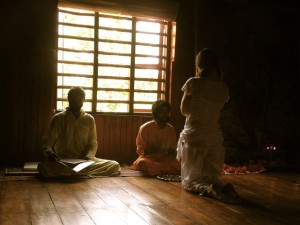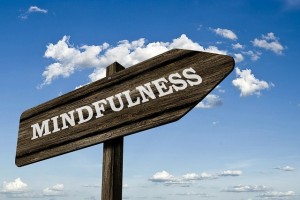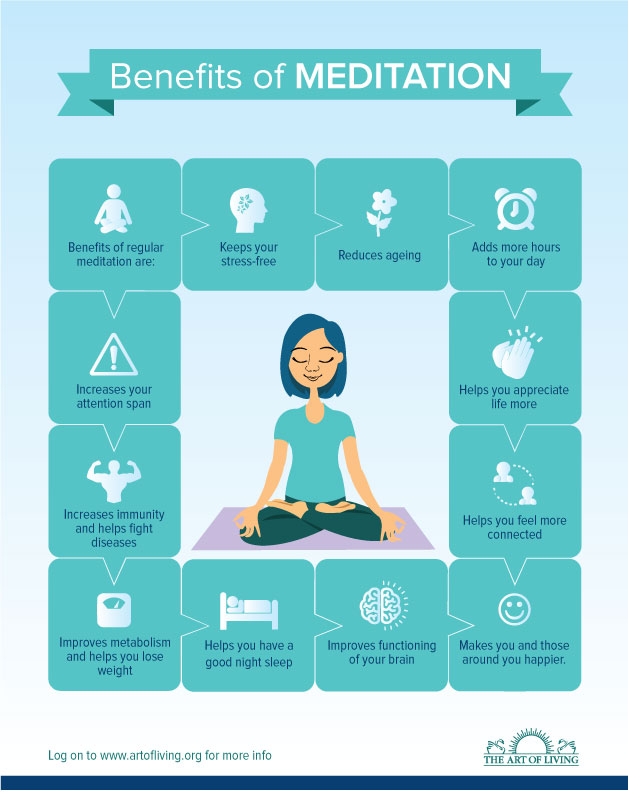Meditation has never been fun.
In his first sermon at the Deer Park, I doubt the Buddha said to his disciples, “You should stop by BuddhaWorks on Friday night. We’ll be sitting around until our butts go numb and we come face-to-face with our annoying monkey minds. And by the way, there will be a cleansing carrot, orange, kale, lemon, and ginger juice afterwards.”
Given how many distractions there are in the Western world — and the fact that Americans use electronic media eleven or more hours a day — I’m not surprised that meditation often takes a back seat to some of the more flashy aspects of yoga.
This marketable side of yoga, of course, includes the following yoga fads:
- stand-up paddle board yoga
- karaoke yoga
- yoga for dogs
- naked yoga
- yoga on horseback
- and the ever-popular … face yoga
I’ve never been one to knock someone else’s yoga. As a health writer and yoga teacher, I’m always trying to get more people to do yoga. And to be more physically active, in general.
Moving into Meditation or Moving Meditation
 Sure, I may mock the yoga world a little now and again (like by pointing out some of the “best” ways to make money as a yoga teacher).
Sure, I may mock the yoga world a little now and again (like by pointing out some of the “best” ways to make money as a yoga teacher).
In the end, though, you have to decide what type of yoga is best for you. And whether you want to give seated meditation a try.
If you love doing yoga in a room that feels like a cross between a desert and South Carolina at the peak of summer, more power to you (although you should probably consider whether hot yoga is really safe).
Or if you prefer to do yoga while tattooed and pierced musicians serenade you with a little punk rock, than go for it.
But … when Yoga Journal starts selling asana (yoga poses) as another type of meditation, I have to draw a line in the Bikram yoga super-heated sand.
This asana-as-meditation sales pitch showed up recently in a Yoga Journal article by Rina Jakubowicz. Here’s the introduction:
Not all meditation practice has to happen sitting perfectly still in Lotus Pose. By focusing your awareness inward, on the breath and the way your body moves through transitions and feels in poses, you’ll reap many of the same rewards that seated meditation provides — heightened focus, balanced energy, a sense of grounding, and blissful stress release.
The online title of the article is “17 Poses to Prep for Mindful Meditation,” but the title that appeared in the print magazine was “Moving Into Meditation.”
Either way, the introduction seems to promote yoga poses as a substitute for seated meditation.
Well, not exactly the same as meditation, but close: “you’ll reap many of the same rewards” … without all the hassle of sitting uncomfortably with your mind nagging you to check your iPhone or look at the cute woman/man/dog/horse/stand-up paddle board sitting next to you.
Yoga Poses, Meditation and Mindfulness
When I read this article, two questions immediately came up for me.
Q: Can doing warrior II or sun salutations help you meditate?
According to the Yoga Sūtras of Patañjali, asana and pranayama (breathing exercises) prepare you for meditation. These alter the state of your body, which in turn changes the state of your mind.
Doing the right sequence of yoga poses before meditation makes it easier to sit “perfectly still in Lotus Pose.” This is what I think of when I hear “moving into meditation.”
Before I started doing — and teaching — yoga, I learned meditation at the Shambhala Buddhist Meditation Center in Philadelphia and later Portland, Oregon.
In this style of meditation, the only preparation you get is bowing as you walk into the meditation room.
After that, it’s: sit, breathe in, breathe out … what’s for lunch today? oops, thought! … breathe in, breathe out … why do I keep hearing Frank Sinatra singing? oops, another thought … breathe in, breathe out …
Over time, you get better at settling into meditation without any preparation.
But I’ve found that doing a few yoga poses before sitting on the meditation cushion helps my meditation practice. My back no longer cramps after a few minutes. And my mind more easily lets go of the thoughts that are racing through it.
Q: Can you be mindful while doing handstand or downward-facing dog?
The Yoga Journal article suggests that all you have to do is focus your awareness on your breath and your body as you work your way through 10, 30 or 60 minutes of yoga poses like handstand or downward-facing dog.
I try to do this every time I step onto the mat. And it’s never easy.
This focusing of your awareness is the start of dharana, the sixth of the eight limbs of ashtanga yoga — also described as “immovable concentration of the mind.”
Anyone can do this while practicing yoga. But I find that two things make it go much more smoothly for me:
- I practice alone (unless my partner’s children are awake and telling me about the zombies or ghosts they dreamed about last night)
- I don’t listen to music while I practice
Both of these help me stay focused on my breath and body during my asana practice. But even without the distraction of yoga music like Wah! or Iron and Wine, or a yoga teacher talking at me, this state of mind if very far from meditation.
It’s a step forward, of course. Because as I said before, my meditation is much more effective if I do asana and pranayama beforehand.
Start Small With Mindfulness
In Buddhist terms, I like to think of dharana as mindfulness, something that Thich Nhat Hanh talks a lot about in his books. In the Miracle of Mindfulness, he writes:
If while washing dishes, we think only of the cup of tea that awaits us, thus hurrying to get the dishes out of the way as if they were a nuisance, then we are not “washing the dishes to wash the dishes.” What’s more, we are not alive during the time we are washing the dishes. In fact we are completely incapable of realizing the miracle of life while standing at the sink. If we can’t wash the dishes, the chances are we won’t be able to drink our tea either. While drinking the cup of tea, we will only be thinking of other things, barely aware of the cup in our hands. Thus we are sucked away into the future — and we are incapable of actually living one minute of life.
Mindfulness can — and should — be practiced with any activity. It’s easier, though, if you start with simple actions like:
- washing the dishes
- making tea
- walking slowly
- painting a fence
- watching your breath
Trying to keep your mind focused while you move through 10 or 20 yoga poses is much more difficult. Memorizing a sequence of yoga poses — as you do in Ashtanga yoga — makes it easier. As does practicing in the silence of your own home.
Of course, it’s good to practice mindfulness every chance you get (and there are a lot of chances in our busy lives).
But even Thich Nhat Hanh doesn’t give up seated meditation just because he’s paying attention while mowing the lawn.
Reap the Benefits of Seated Meditation
 Skipping seated meditation — to spend more time doing active yoga poses — may mean that you’re missing many of the benefits of meditation:
Skipping seated meditation — to spend more time doing active yoga poses — may mean that you’re missing many of the benefits of meditation:
- boosted immune system
- increased energy level
- greater creativity
- more happiness
- sharpened and more focused mind
- expanded consciousness
If you find seated meditation boring or awkward or uncomfortable (emotionally or physically), don’t despair. This is exactly where you need to be.
Meditation isn’t about having a perfectly still mind. If that ever happens, you are probably dead … and then it’s too late to meditate. Meditation is more about noticing that your mind is distracted or agitated, and bringing it back to a state of focus … over and over again.
When you fill your life with more activity — more Angry Birds, more texting on your iPhone, more late-night funny cat videos, or more active yoga poses — you are only feeding your mind’s need for constant motion.
Sometimes, it’s only when you stop moving so much that you can finally move forward.
In meditation we discover our inherent restlessness. Sometimes we get up and leave. Sometimes we sit there but our bodies wiggle and squirm and our minds go far away. This can be so uncomfortable that we feel it’s impossible to stay. Yet this feeling can teach us not just about ourselves but what it is to be human … we really don’t want to stay with the nakedness of our present experience. It goes against the grain to stay present. These are the times when only gentleness and a sense of humor can give us the strength to settle down … so whenever we wander off, we gently encourage ourselves to “stay” and settle down. Are we experiencing restlessness? Stay! Are fear and loathing out of control? Stay! Aching knees and throbbing back? Stay! What’s for lunch? Stay! I can’t stand this another minute! Stay!
― Pema Chödrön, The Places That Scare You: A Guide to Fearlessness in Difficult Times
_____
Photos
- Benefits of Meditation infographic by Art of Living





